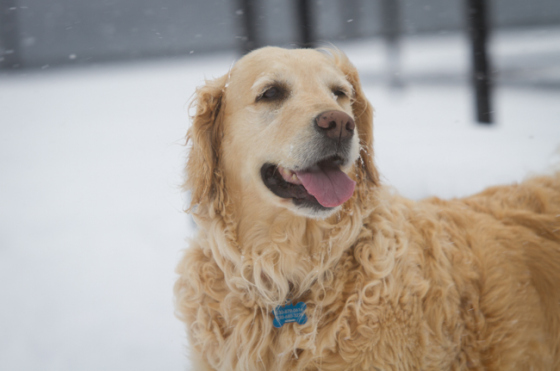
Keeping Your Dog Warm
Taken from seattlepi “Canine Chat” blog by Diane RIch, 11/11/14 (Diane’s website is www.spokesdog.com and you can email her questions, too, at askdiane@spokesdog.com)
Rain, hail, snow, wind and every now and then a sun break are all a part of winter weather conditions around the country. Breeds such as Malamutes, Huskies, Shiba Inus, Samoyeds, Chessies are better suited than many other breeds for winter conditions breeds but that does mean they can withstand harsh conditions for long periods of time.
1. Outdoor Living
If your dog must live in an outdoor enclosure the dog absolutely must have the opportunity to get away from the elements which includes protection from the wind. Make sure the dog has access to water 24/7 and that the water does not freeze. A dog house must be well insulated and be raised above ground. Space heaters can be dangerous if knocked over or if set up too close to a dog but heat must be supplied to the dog house or enclosure for humane conditions to be met. Dogs who unfortunately must live outdoors will need more food than during warmer months.
I strongly encourage you to bring pets indoors during harsh winter weather or if temps drop below freezing. If you are thinking of getting a pet but cannot give them the opportunity to live with you in your warm home, please rethink getting a dog.
2. Canine Couture
Raincoats are usually made of waterproof or water resistant nylon fabric and some raincoats have a fleece liner which is more comfortable than nylon next to their skin. Fleece coats are great for cold weather walks, hiking or accompanying you on snow shoeing adventures in the mountains. Fleece coats are best for cold days, not rainy days. Some coats come with a little hoodie to protect your dog’s neck and some coats have a little hole in the neck area for the leash to pass through to connect to your dog’s collar.
3. Footwear
Booties can help dogs footing when walking on icy roads. Rock salt or crusty snow can cause frostbite or irritate skin or foot pads. Some booties are fleece and some are waterproof. Many of the Huskies entered in the Iditarod wear booties so don’t think your dog is a weenie for wearing booties.
4. Antifreeze Good for Cars Bad for Pets
If you are new to pet parenting be advised that just a small amount of antifreeze is toxic to both dogs and cats. Unfortunately, the taste is sweet which tantalizes pets into taking a sample. Check the floor under your car for leaks and prevent your pet access to antifreeze containers
5. Packing on the Pounds
Many people who live in cold climates take time off outdoor exercise routines but continue enjoying comfort food so winter weight gain can be the end result of too much pasta. Pets require more food to keep warm but an overweight pet is no better off than an overweight human.
6. Lakes
Although frozen lakes are beautiful, every year 911 is needed to rescue people and in some cases pets who wander out on what seemed to be a frozen lake only to end up in that lake due falling through thin ice.
7. Keeping Warm
Heat sources are a necessity but heat lamps or space heaters can unfortunately be a hazard. Heat lamps have
been known to cause severe burns if set up too close to a pet and space heaters can be knocked over and cause a fire.
8. Heading to a Warm Climate?
Every region in the U.S. is home to specific parasites. If you winter in Fla. your dog must be on a heartworm preventative so talk with your Vet about parasite control before your great escape.
9. Prepare for Power Outages
Due to winter blizzards, frozen branches falling on power lines and the inevitable interrupted power service it is best to be proactive for outages. Along with your personal emergency kit should also be a pet emergency kit which needs to include pet food and water for at least 5 days and any prescription meds your pet needs. Including a fleece throw for bedding and an extra coat to keep your pet warm. You may want to keep your pet’s emergency kit in the car for road travel should you get stuck due to a snow storm.
10. Pass the Salt Please
Ice brings out salt to assist in melting snow or keeping ice from accumulating on walking surfaces. Great for humans, helpful for traction for cars but hard on canine paws. If your dog’s paws make contact with treated surfaces make sure
you rinse off any of these salts or chemicals after your walk.
